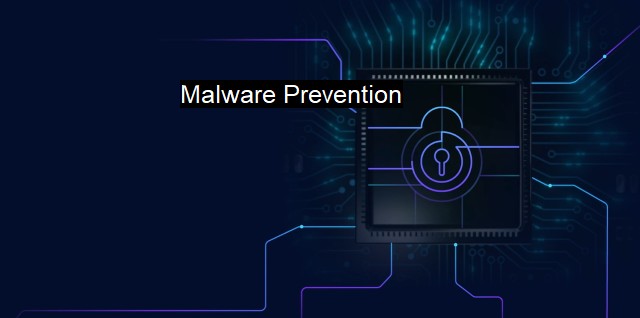What is Malware Prevention?
Defending Your System: The Importance and Techniques of Malware Prevention and Antivirus Software
Malware prevention refers to the strategies and solutions adopted by individuals and organizations to protect their systems and networks from malicious software, often called malware. These harmful entities pose a significant threat to cybersecurity. They are expertly designed to infiltrate and debilitate computer systems, networks, and other technological resources, often without the user's knowledge.Malware is a broad term commonly used in the cybersecurity and antivirus sectors to describe a variety of hostile or intrusive software. This software primarily includes viruses like worms and Trojans, ransomware, spyware, adware, scumware, and other malicious programs. These invoke adverse impacts on the infected system or network, such as slowing it down, corrupting files, stealing sensitive information, or even using your system as a host to attack others.
Cybersecurity practices emphasize a need for robust malware prevention strategies. To fully comprehend the extent of exhibition, it is important to understand the diverse landscape of malware propagation. Malware may invade through phishing emails, malicious websites, attachments in emails, or via software and system vulnerabilities. malware is persistent and frequently morphs tactics, techniques, and procedures to bypass defensive screening mechanisms. It is a critical challenge that cybersecurity teams must face and mitigate.
The essence of malware prevention revolves around establishing a solid defense mechanism that prevents the entrance and perpetuation of malware. Antivirus software plays a pivotal role in the mechanism. It scans, detects, and eliminates any potential malware threats in real-time. Antivirus software operates based on a database of known threats, combined with heuristic and behavioral analysis to detect novel or altered versions of malware.
An antivirus represents just one facet of a broader, strategic approach to malware prevention. Keeping software and systems updated is another key dimension. Encounter updates usually arrive with fixes for identified vulnerabilities, which cybercriminals could exploit otherwise. Patch management, therefore, becomes an integral step in curtailing the pathway for malware infiltration.
Strong, unique passwords and multi-factor authentication (MFA) further fortify the line of defense. These measures offer robust protection, making it substantially challenging for invaders to crack through user credentials. Therefore, enforcing a strict password policy and executing MFA throughout the organization significantly mitigate the risk.
Safe browsing habits and email practices form notable aspects of malware prevention. Avoiding suspicious emails and refraining from clicking on unverified links or sharing sensitive details drastically curtails the opportunity for malware intrusion. Proper cybersecurity education and awareness further complement the defense mechanism. Both individuals and organizations' staff need to be educated about malware and cybersecurity threats, as well as safe online conduct.
In the proximate world of diverse IoT devices, securing devices connected to a network also gain emphasis in preventing malware attacks. Every connected device presents an entry point for potential cyber threats. Therefore, it is paramount to set strong security protocols on these devices as well.
Investing in a good backup solution is essential to add another layer of protection. In the event of a successful malware attack, having a secure backup can rescue the user from substantive loss of data or even from irritated actions such as paying ransom in the case of ransomware attacks.
Complying with cybersecurity best practices and standards plays a substantial role in assurance of comprehensive security. Adhering to a strong security policy and applicable laws and regulations steer an organization clear of many potential mishaps.
It is crucial to remember that no system is entirely immune to cyber threats. Therefore, a proactive approach to security, coupled with robust digital hygiene, limits the exposure to potential malware attacks: an updated system, robust password management, secure browsing practices, adherence to cybersecurity policies and standards, enabling multi-factor authentication, safeguarding IoT devices, and having a proper backup and recovery plan in place.
Malware prevention in cybersecurity is less about totally eliminating risks. Instead, it involves building a robust multi-tiered defense system that significantly mitigates potential malware risks. Cyber threats are continuous and ever-evolving, which makes malware prevention an ongoing, continuous process requiring vigilance, updates, and adaptations. In this realm, every aspect concerning data and transaction integrity, system security, privacy, and confidentiality converge, demanding a stout representation against malware threats.

Malware Prevention FAQs
What is malware prevention?
Malware prevention is the practice of implementing measures to prevent malicious software, commonly known as malware, from infecting computer systems and networks.How can I prevent malware attacks on my system?
You can prevent malware attacks on your system by installing and regularly updating antivirus software, using strong passwords, avoiding suspicious email attachments and links, and keeping your operating system and software up-to-date.What are some common types of malware?
Common types of malware include viruses, trojans, ransomware, adware, and spyware.Why is malware prevention important in cybersecurity?
Malware prevention is important in cybersecurity because malware can cause significant harm to computer systems, including data loss, theft of personal information, and financial loss. By implementing effective malware prevention measures, you can significantly reduce the risk of cyberattacks and protect your network and data.| | A | | | B | | | C | | | D | | | E | | | F | | | G | | | H | | | I | | | J | | | K | | | L | | | M | |
| | N | | | O | | | P | | | Q | | | R | | | S | | | T | | | U | | | V | | | W | | | X | | | Y | | | Z | |
| | 1 | | | 2 | | | 3 | | | 4 | | | 7 | | | 8 | | |||||||